Содержание
- 2. Bad-news messages Plan the bad-news message. Compose a message that rejects an idea. Compose a message
- 3. Planning the Bad-News Message Your purpose in writing a bad-news message is twofold: To say “no”or
- 4. Organizing to Suit Your Audience 1. The reader’s needs, expectations, and personality-and the writer’s relationship with
- 5. 3. A direct message presents the major idea (the bad news) first, follows with any needed
- 6. Prefer the direct plan when Writing to superiors The bad news involves a small routine matter,
- 7. Direct messages often are shorter than indirect messages because the direct plan typically is used for
- 8. Presenting bad news directly Present a brief rationale along with the bad news. Follow with needed
- 9. Not: The annual company picnic originally scheduled for August 3 at Riverside Park has been canceled.
- 10. Discussion questions Which is less desirable: an impatient reader or angry reader? Why is a poorly
- 11. Possible answers If the receiver becomes impatient while reading a well-written explanation, that impatience is less
- 12. Prefer the indirect plan when Writing to colleagues and subordinates Writing to someone outside the organization
- 13. Presenting bad news indirectly Begin with a buffer. Justify your decision. Present the bad news. Close
- 14. An indirect message should begin with an opening buffer that lessens the impact of bad news
- 15. Relevant Irrelevant: Our new apartment-sized microwave oven means that young couples, retirees, and students can enjoy
- 16. interesting Obvious: We have received your letter requesting an in-store demonstrator for your upcoming tenth-anniversary. Short
- 17. Types of buffers Agreement I agree with you that full-color visual aids are more effective and
- 18. Types of buffers Compliment Congratulations, Tony, on the 95 percent approval rating from our seminar participants.
- 19. Types of buffers General principle I believe in furnishing our trainers with the tools that they
- 20. Types of buffers Understanding I want you to know that I support your efforts to increase
- 21. Justifying Your Decision You have reached your decision by analyzing all the relevant information. Explaining your
- 22. Not: Company policy prohibits our providing an in-store demonstrator for your tenth-anniversary sale. But: A survey
- 23. Giving the Bad News If you have done a convincing job of explaining the reasons, the
- 24. Giving the bad news To enable us to have the funds needed to finance our move
- 25. Discussion question Roy Jacobson suggests that three basic qualities should be used in delivering bad news:
- 26. Closing on a positive note Best wishes Best wishes, Tony, as you continue your efforts to
- 27. Closing on a positive note Other sources of help In the meantime, Marc Dye has indicated
- 28. Quiz What are the four elements of a bad news message that uses the indirect approach?
- 29. Quiz What are the four elements of a bad news message that uses the indirect approach?
- 30. What is the goal of a buffer statement in a bad news message? To establish or
- 31. What is the goal of a buffer statement in a bad news message? To establish or
- 32. Key term buffer 缓冲
- 33. Bad-News Replies Rejecting an Idea One of the most difficult bad-news messages to write is one
- 36. In-class writing: Refusing an Idea--Oversized Dressing Rooms You are Rebecca Chavez and you certainly appreciate Robert
- 37. Refusing a Favor 1. If someone tries to persuade you to do a “big” favor that
- 40. In-class writing: Refusing a Favor-Summer Internship Assume the role of vice president of operations for Kolor
- 41. Refusing a Claim 1. The indirect plan almost always is used when refusing an adjustment request,
- 42. 3. When explaining the reasons for denying the claim, do not accuse or lecture the reader.
- 43. 4. In impersonal, neutral language, explain why you are denying the claim. 5. If you can,
- 46. In-class writing -Refusing a Claim-No Refund You are the fulfillment representative an Paperbacks by Post. Roberto
- 47. Bad News About Normal Operations 1. When the news is going to have little or no
- 51. In-class writing: Work-team Communication-A Slow Economy-No Bonus You are the manager of a fitness equipment manufacturing
- 52. Bad News About the Organization 1. If your organization is experiencing serious problems, your employees, customers,
- 53. 4. Choose your words with care. Be positive. 5. If the reader already has learned about
- 57. Скачать презентацию

















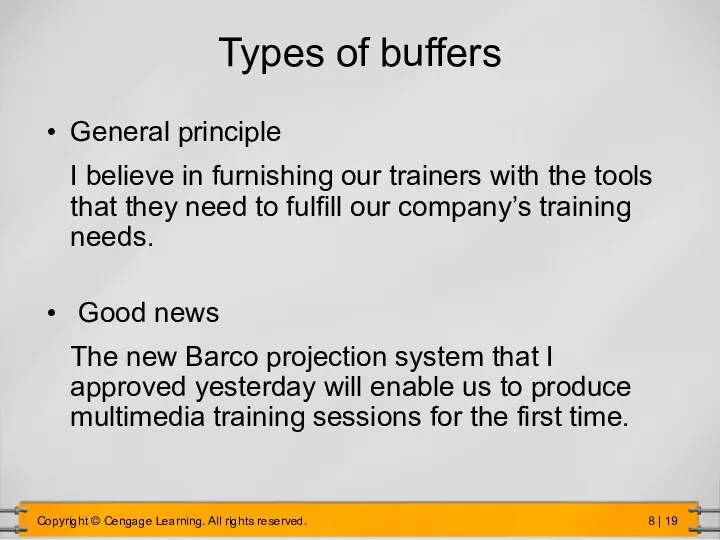

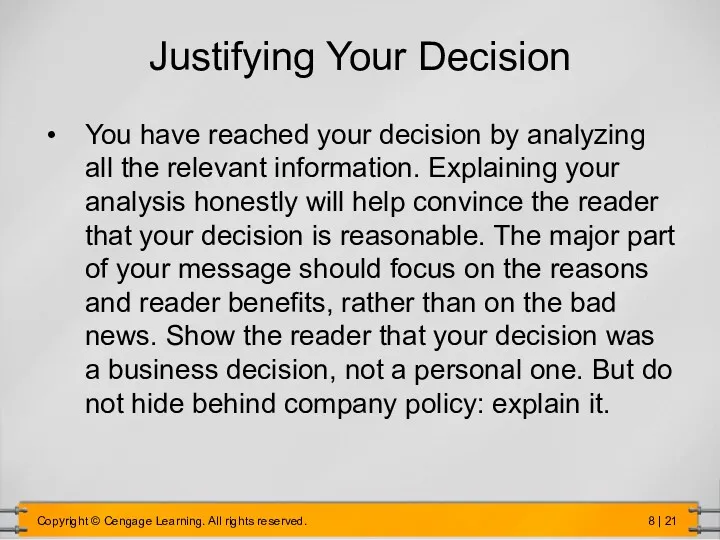
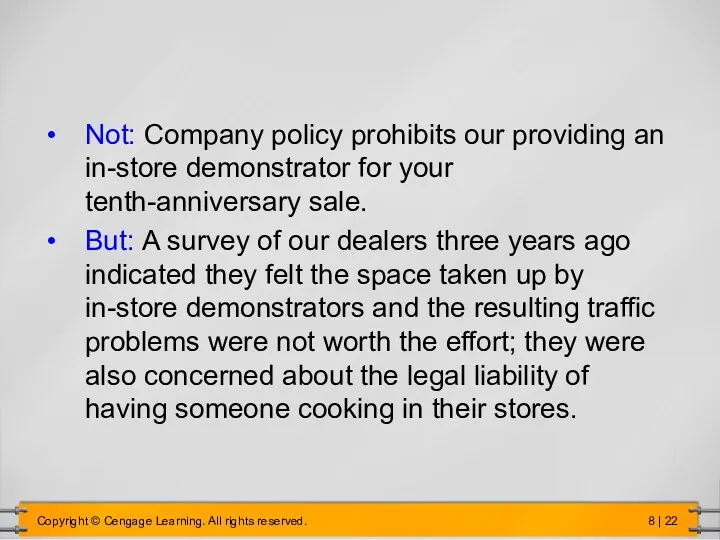

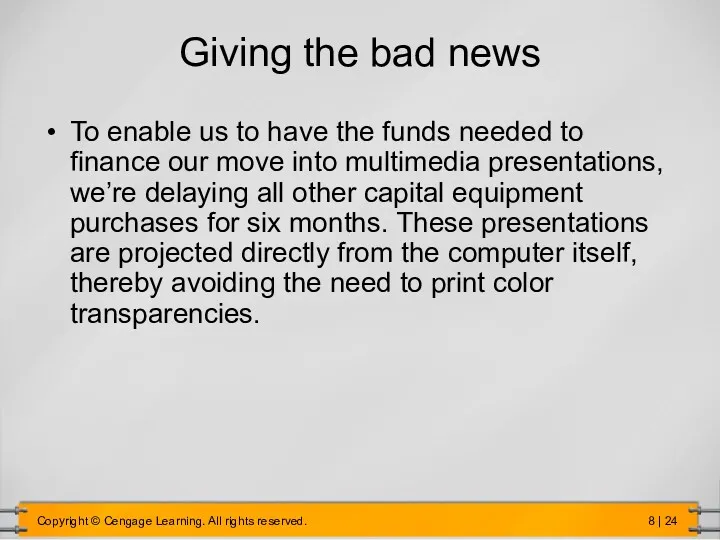
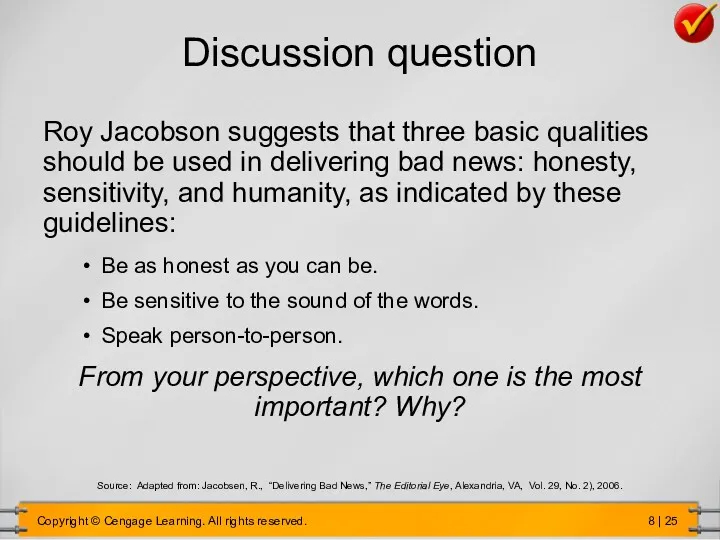
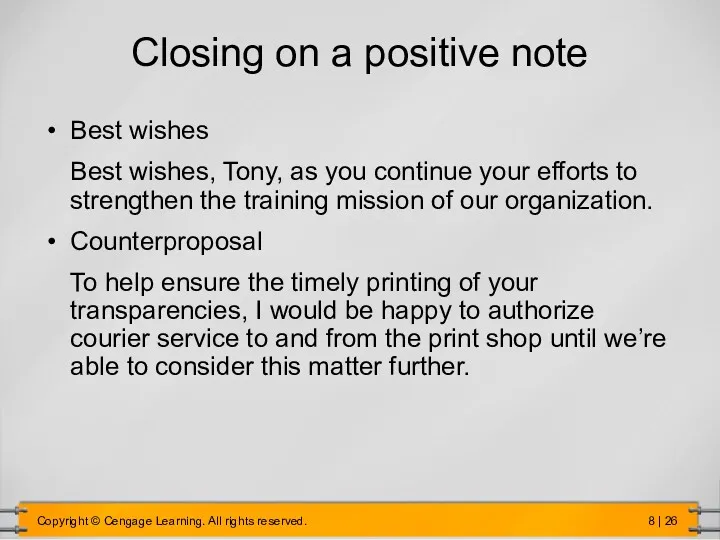
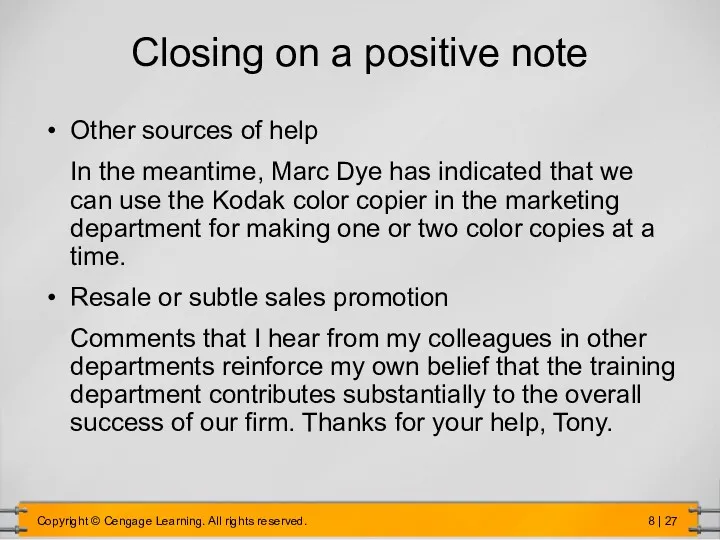
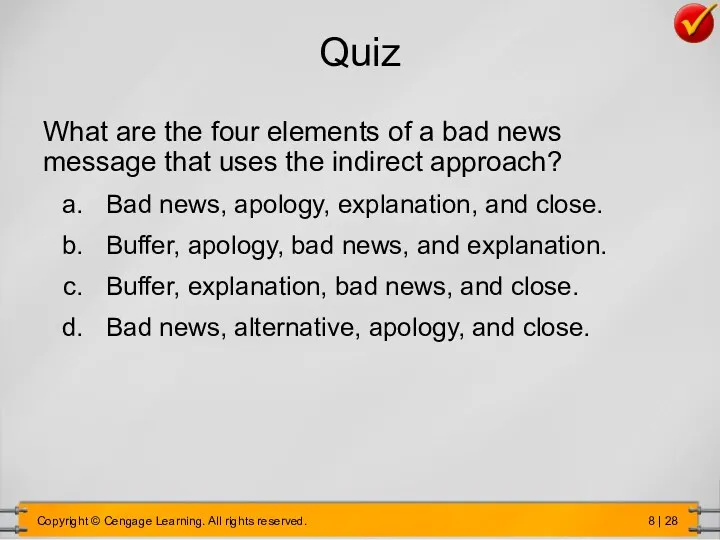
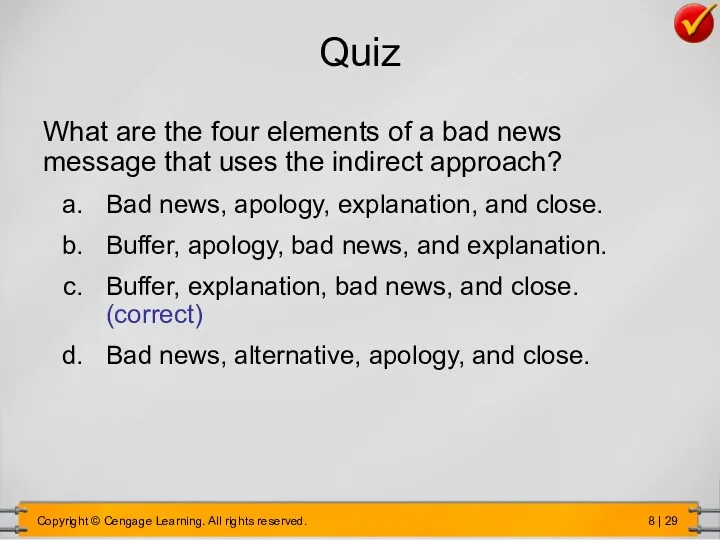
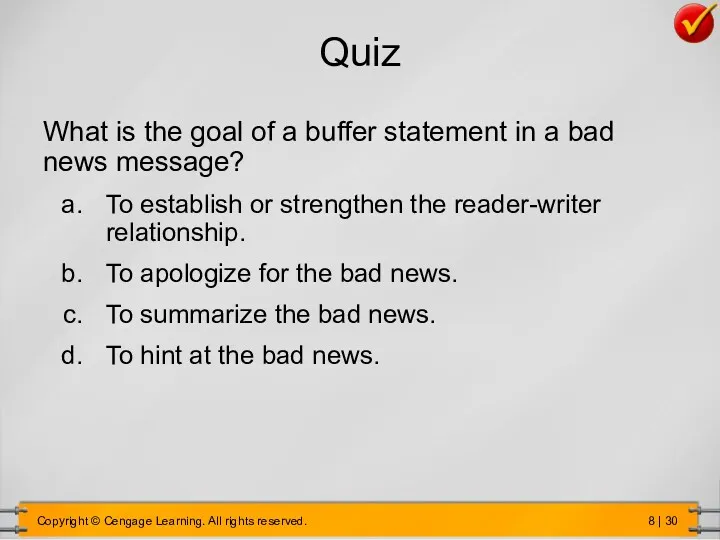
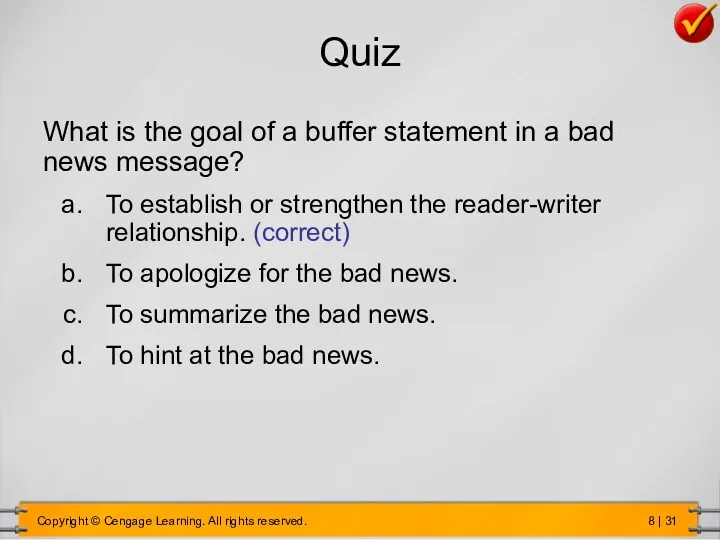
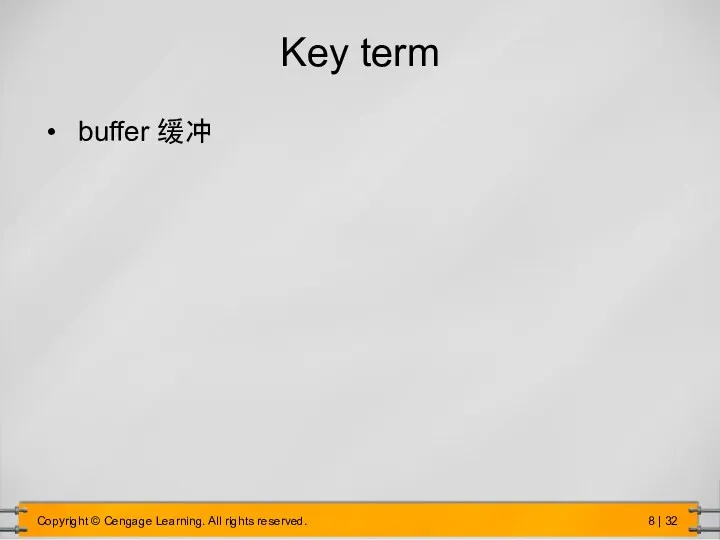
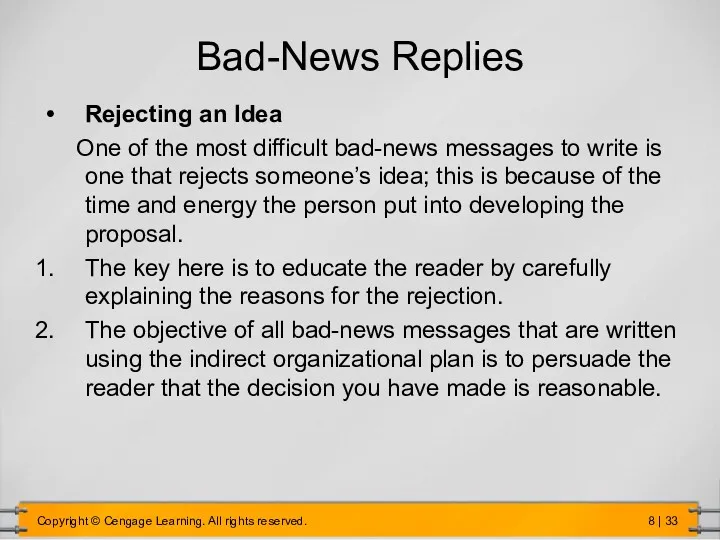
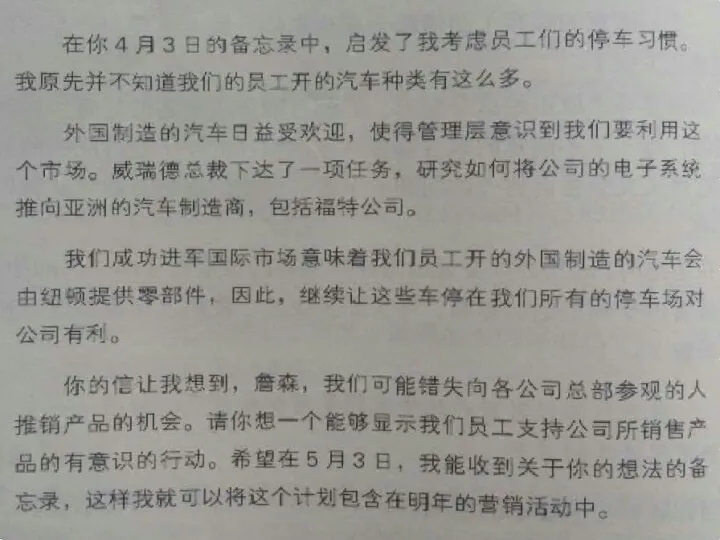
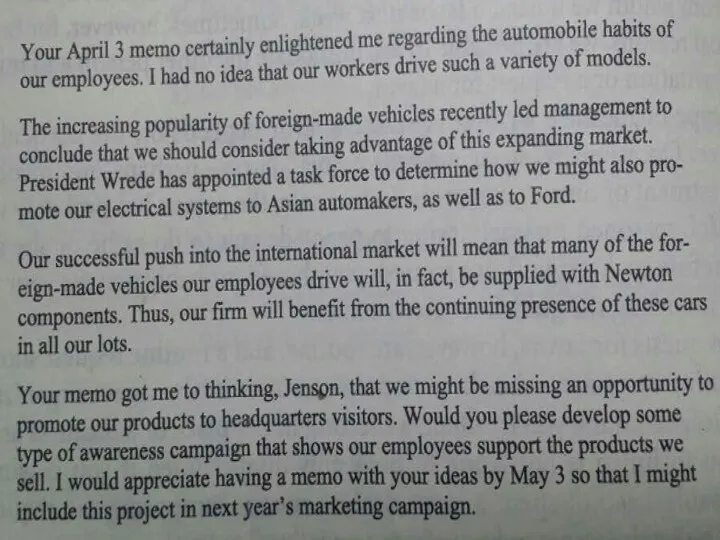
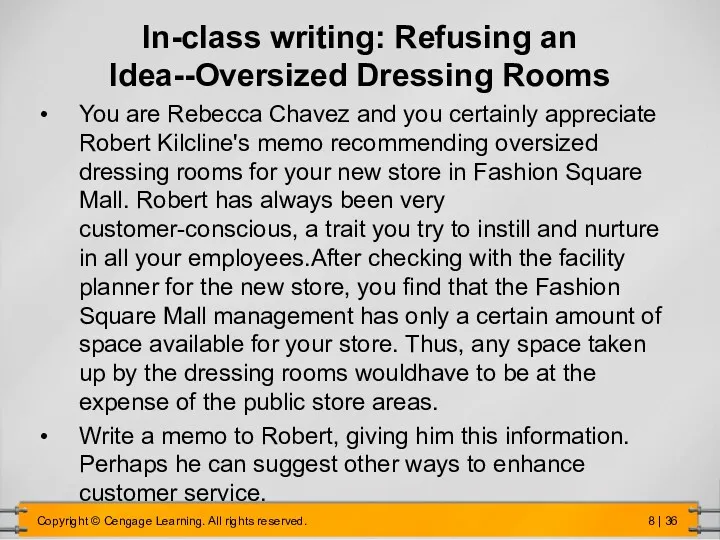
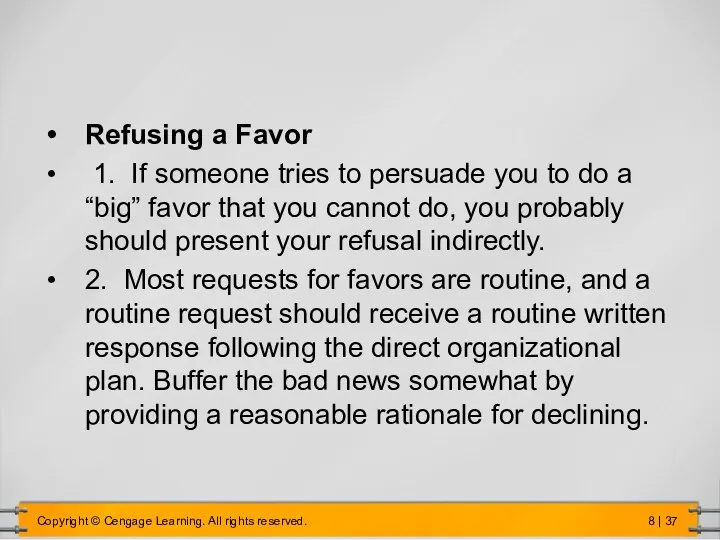
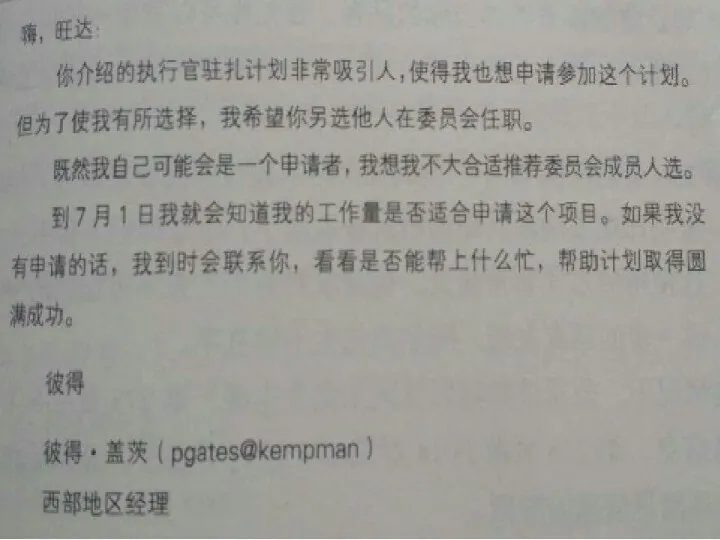
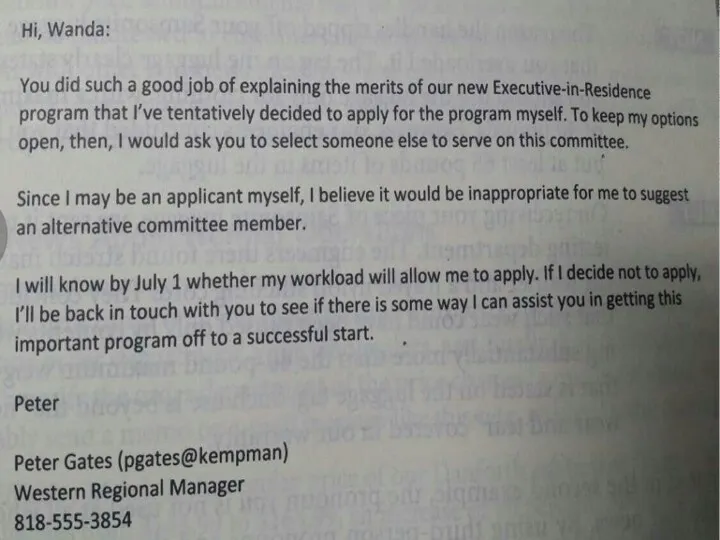
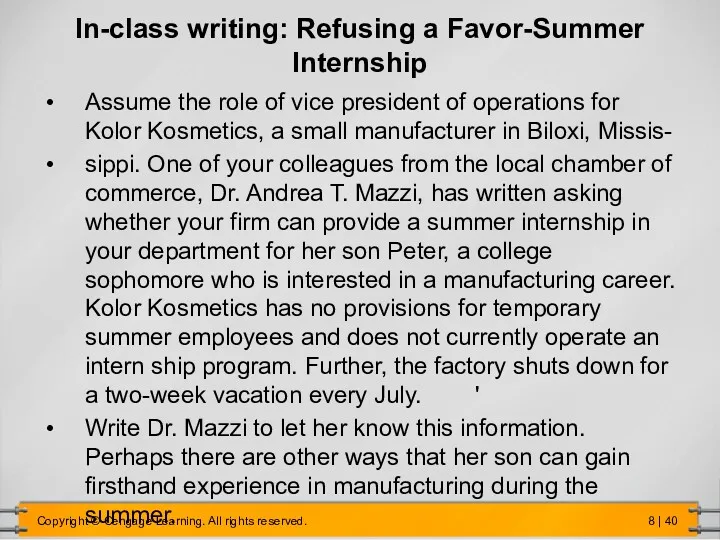
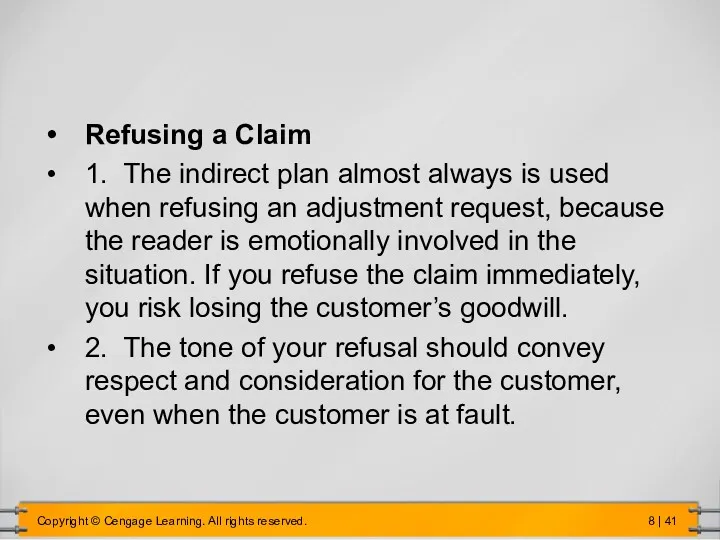
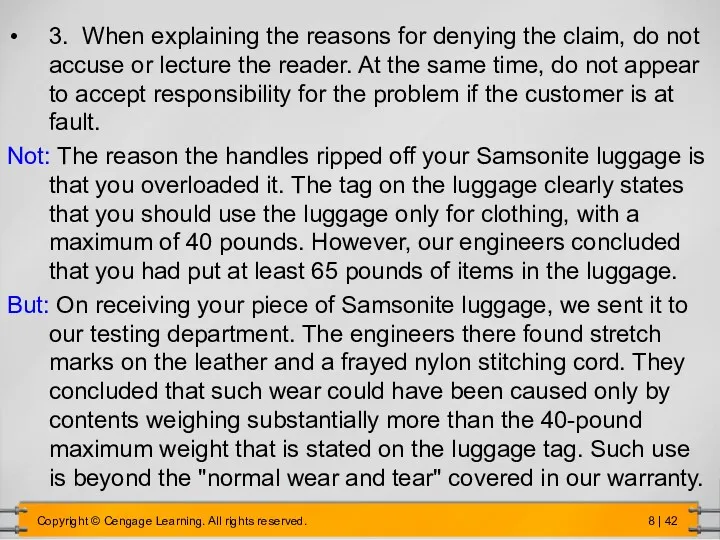
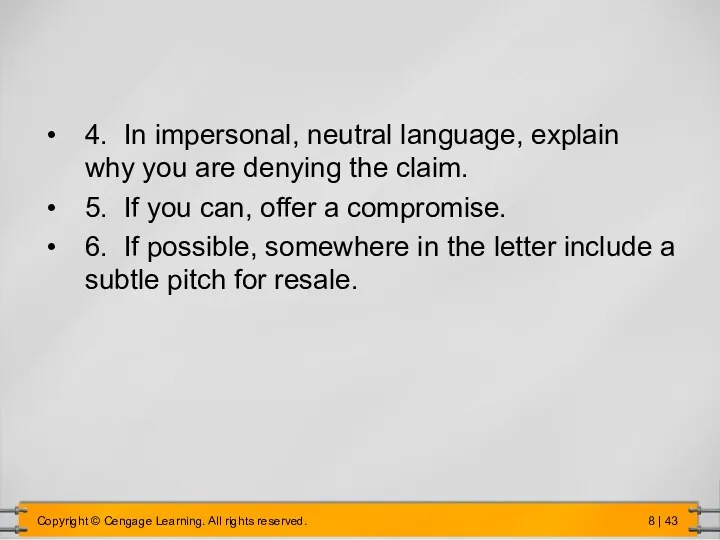
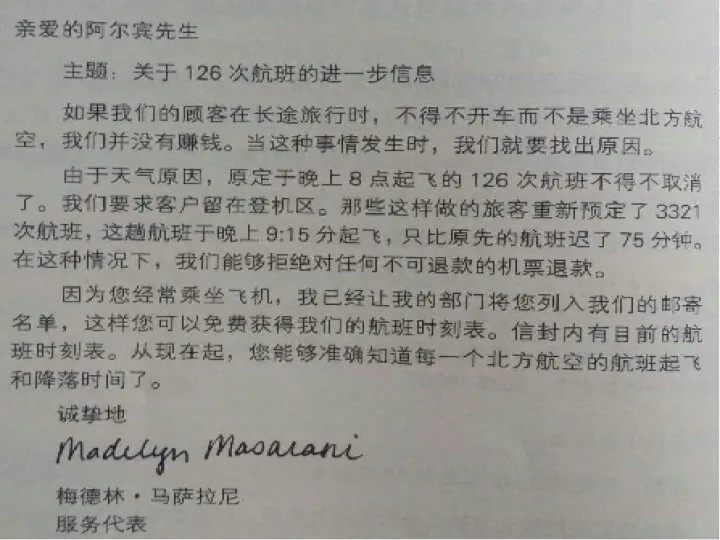

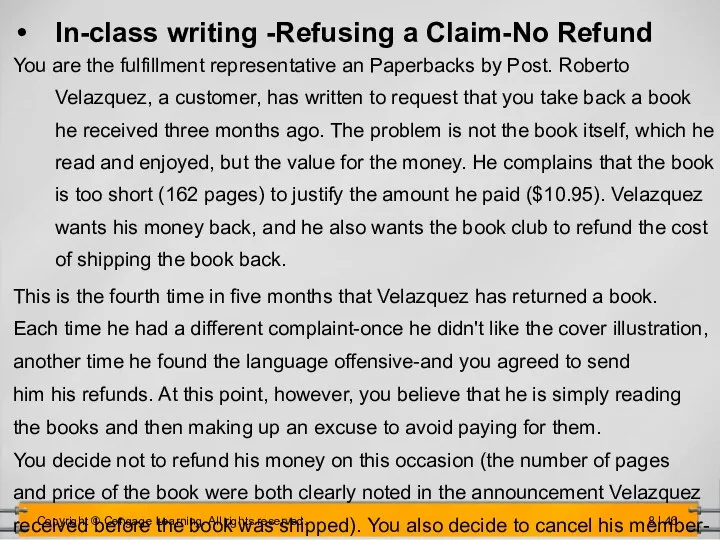
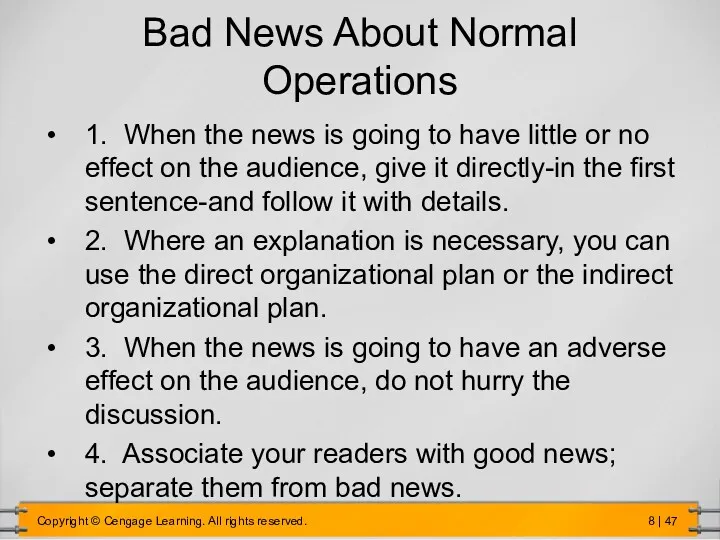


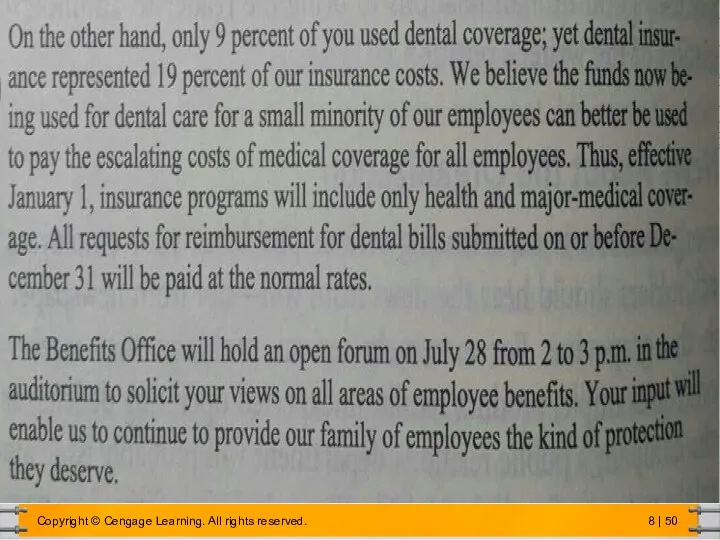
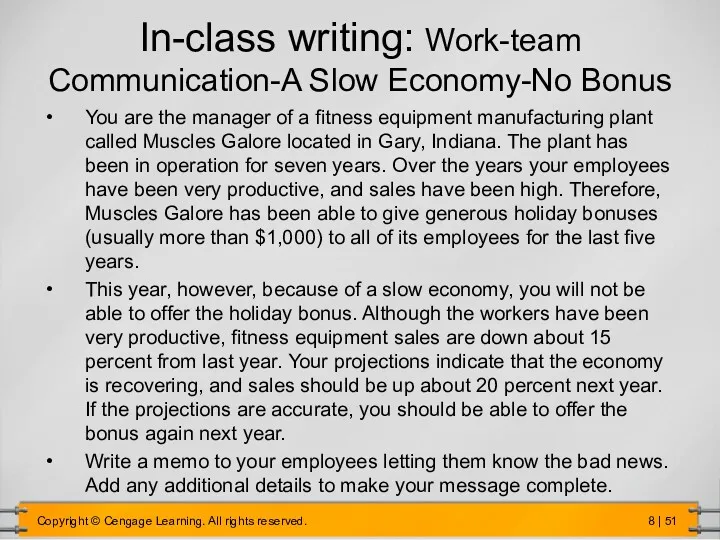
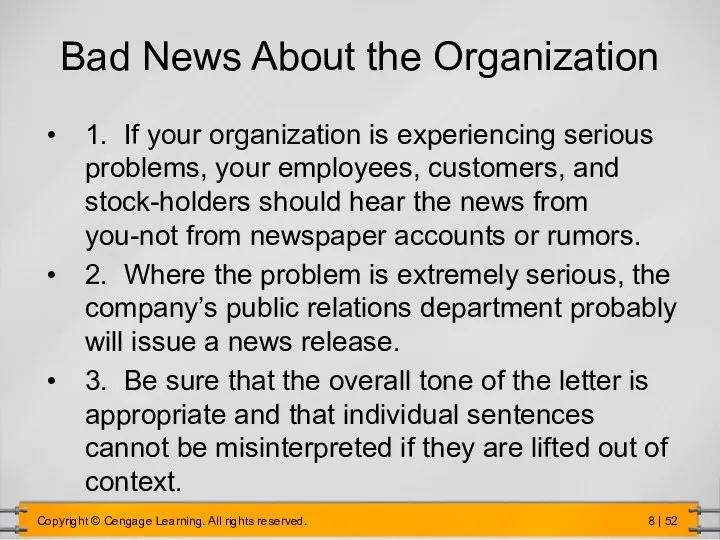
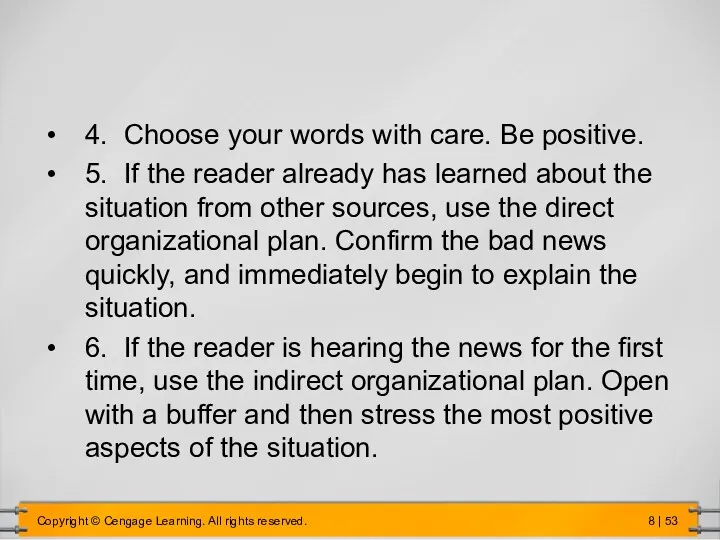
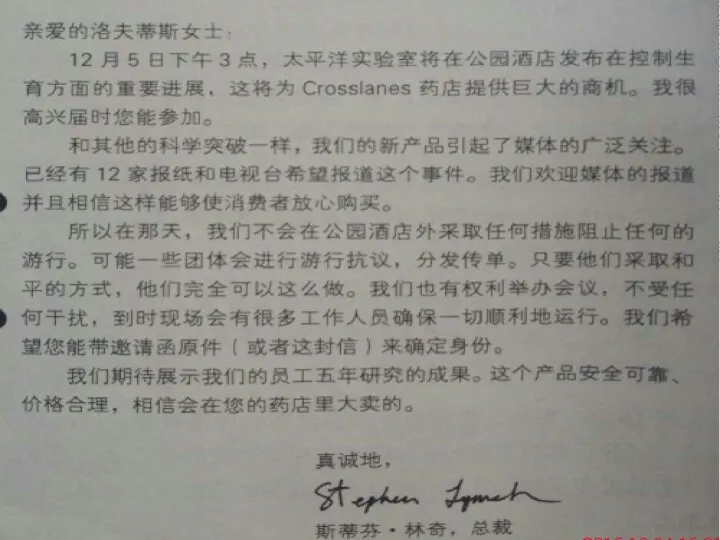
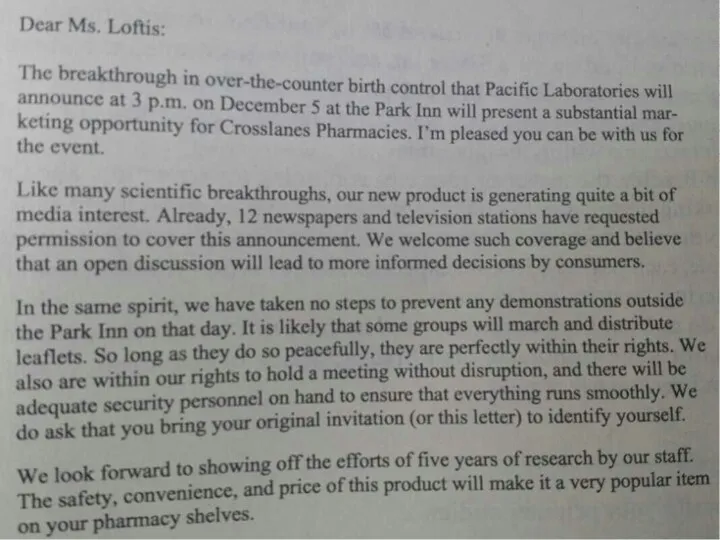
 Феномен улыбки
Феномен улыбки Путешествие в страну эмоций
Путешествие в страну эмоций Предмет и методы истории психологии
Предмет и методы истории психологии Психология воспитательных практик
Психология воспитательных практик Проблема развития мышления и речи в раннем детстве
Проблема развития мышления и речи в раннем детстве Система обучения сотрудников. Аудит системы обучения на предприятиях. Показатели работы с персоналом
Система обучения сотрудников. Аудит системы обучения на предприятиях. Показатели работы с персоналом Педагоги и родители: выстраиваем контакт
Педагоги и родители: выстраиваем контакт Активное слушание
Активное слушание Мама-Судьба
Мама-Судьба Психология и медицинская психология
Психология и медицинская психология Социальная психология личности. Социализация
Социальная психология личности. Социализация Психика: основные тенденции эволюции
Психика: основные тенденции эволюции Әлеуметтік психология пәні, құрылымы және әдістер
Әлеуметтік психология пәні, құрылымы және әдістер Интервью по компетенциям (поведенческое интервью)
Интервью по компетенциям (поведенческое интервью) ! Презентация ЛИЧНОСТЬ как базовая категория психологии
! Презентация ЛИЧНОСТЬ как базовая категория психологии Социально-психологическое тестирование по единой методике
Социально-психологическое тестирование по единой методике Психолого-педагогический портрет младшего школьника с умственной отсталостью
Психолого-педагогический портрет младшего школьника с умственной отсталостью Восстановительные технологии: круги сообществ
Восстановительные технологии: круги сообществ Преподаватель. Поведение на занятиях и отношения со студентами
Преподаватель. Поведение на занятиях и отношения со студентами Терапевтическая группа: Любовь. Секс. Отношения
Терапевтическая группа: Любовь. Секс. Отношения Семинар по здоровьесберегающим технологиям
Семинар по здоровьесберегающим технологиям Графология. Наука, изучающая законы зависимости между почерком и личностью
Графология. Наука, изучающая законы зависимости между почерком и личностью Физиологические и психологические особенности подросткового возраста
Физиологические и психологические особенности подросткового возраста Основные направления современной психологии
Основные направления современной психологии Психологическое консультирование женщины среднего возраста по проблеме эмоционального выгорания в семье
Психологическое консультирование женщины среднего возраста по проблеме эмоционального выгорания в семье Management styles
Management styles метод Дискуссия
метод Дискуссия Психологические приёмы манипулирования сознанием человека
Психологические приёмы манипулирования сознанием человека